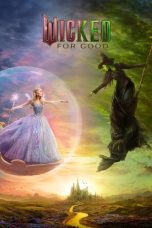Ugetsu (1953) – A Haunting Masterpiece of Japanese Cinema
“Ugetsu,” directed by Kenji Mizoguchi and released in 1953, is a timeless classic that blends historical drama with supernatural elements to create a deeply moving and visually stunning film. Set against the backdrop of civil war in 16th-century Japan, “Ugetsu” tells a tale of ambition, love, and loss, infused with haunting beauty and profound humanism. The film is available for streaming on the Criterion Channel and for rental or purchase on platforms such as Amazon Prime Video, Google Play, and iTunes.
Plot Summary
“Ugetsu” follows the lives of two peasant couples in war-torn Japan: Genjuro (Masayuki Mori) and his wife Miyagi (Kinuyo Tanaka), and Tobei (Eitaro Ozawa) and his wife Ohama (Mitsuko Mito). Driven by dreams of wealth and samurai glory, Genjuro and Tobei set out to achieve their ambitions, leaving their wives behind. Genjuro’s pottery business prospers, but he is seduced by Lady Wakasa (Machiko Kyo), a mysterious noblewoman with a dark secret. Meanwhile, Tobei abandons Ohama to pursue his dream of becoming a samurai, only to face the harsh realities of his choices. As their paths diverge, the men’s pursuits of glory lead to tragic consequences, revealing the ephemeral nature of human desires and the enduring strength of love and redemption.
Themes and Motifs
“Ugetsu” explores themes of ambition, the supernatural, and the human cost of war. The film delves into the destructive nature of unchecked ambition, showing how Genjuro and Tobei’s desires lead them away from their loved ones and into a world of illusion and regret. The supernatural elements, including ghostly apparitions and eerie landscapes, serve as metaphors for the characters’ inner turmoil and the consequences of their actions. Themes of love, sacrifice, and redemption are woven throughout the narrative, highlighting the resilience of the human spirit amidst suffering and loss. The film also reflects on the impact of war on ordinary lives, emphasizing the futility and devastation wrought by conflict.
Cinematography and Direction
Kenji Mizoguchi’s direction in “Ugetsu” is masterful, characterized by long takes, fluid camera movements, and meticulously composed shots. The film’s cinematography, by Kazuo Miyagawa, is breathtaking, capturing the ethereal beauty and haunting atmosphere of the story. The use of light and shadow, misty landscapes, and reflective water surfaces creates a dreamlike quality that enhances the film’s supernatural and emotional elements. Mizoguchi’s attention to detail and ability to convey deep emotional resonance through visual storytelling make “Ugetsu” a cinematic tour de force. The pacing is deliberate, allowing the characters’ journeys and the film’s themes to unfold with grace and poignancy.
Performances
The performances in “Ugetsu” are universally excellent, bringing depth and authenticity to the characters. Masayuki Mori delivers a compelling performance as Genjuro, capturing his character’s transformation from a humble potter to a man consumed by greed and desire. Kinuyo Tanaka’s portrayal of Miyagi is deeply moving, embodying the strength and suffering of a woman left behind by her husband’s ambitions. Eitaro Ozawa as Tobei and Mitsuko Mito as Ohama provide strong supporting performances, each portraying the complexities of their characters’ struggles and aspirations. Machiko Kyo’s portrayal of Lady Wakasa is both alluring and haunting, adding a layer of mystique and tragedy to the narrative.
Music and Sound
The film’s score, composed by Fumio Hayasaka, is evocative and enhances the film’s atmospheric and emotional depth. The music blends traditional Japanese instruments with Western orchestration, creating a soundscape that reflects the film’s themes of cultural clash and timeless human experiences. The sound design is equally effective, with natural sounds and eerie silences adding to the film’s immersive and haunting quality. The use of sound and music in “Ugetsu” underscores the emotional and supernatural elements of the story, heightening the overall impact of the film.
Critical Reception
“Ugetsu” has received widespread acclaim from critics and is considered one of the greatest films ever made. It holds high ratings on Rotten Tomatoes and Metacritic, with praise for its direction, cinematography, and performances. Critics have highlighted Mizoguchi’s ability to blend realism with the supernatural, creating a film that is both visually stunning and emotionally profound. “Ugetsu” has been lauded for its exploration of human desires, the consequences of ambition, and the enduring power of love and redemption. The film has also been recognized for its influence on subsequent generations of filmmakers and its enduring significance in the history of cinema.
Streaming and Availability
For those eager to experience the haunting beauty of “Ugetsu,” the film is available on several streaming platforms. Subscribers to the Criterion Channel can stream the film as part of their subscriptions. Additionally, it is available for rental or purchase on Amazon Prime Video, Google Play, iTunes, and other digital services, ensuring that viewers have multiple options to access this cinematic masterpiece.
Conclusion
In conclusion, “Ugetsu” is a haunting and deeply moving film that stands as a testament to Kenji Mizoguchi’s brilliance as a filmmaker. Its blend of historical drama, supernatural elements, and profound humanism makes it a timeless classic that continues to resonate with audiences. Whether you are a fan of Japanese cinema, historical dramas, or simply appreciate masterful storytelling and visual artistry, “Ugetsu” offers an unforgettable and enriching viewing experience.
















